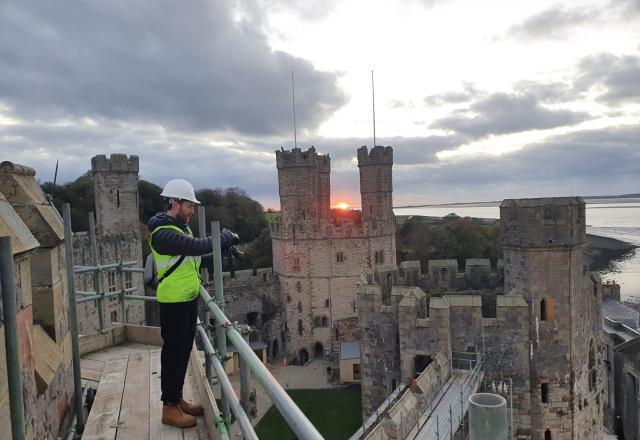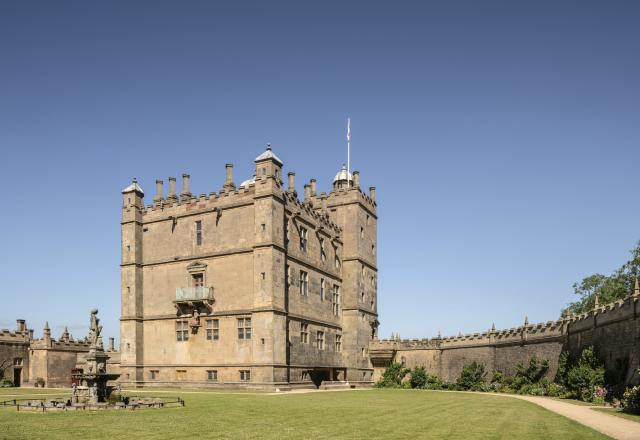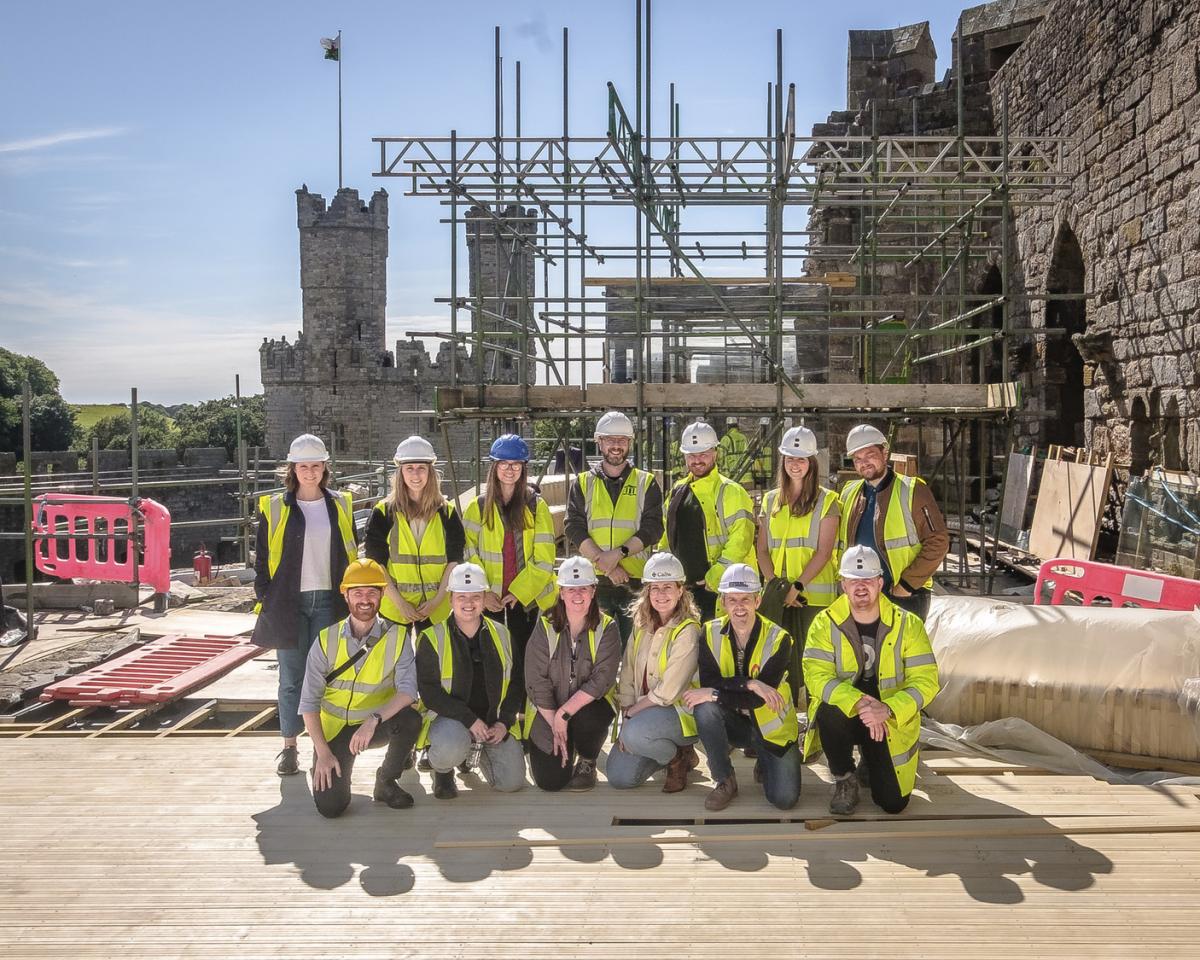
Architect Lucy Ashcroft and Associate Edward Kepczyk discuss their approach to conserving, protecting and enhancing the significance of these important parts of our nation's history.
You’re both currently working with some of the country’s most significant castle sites. What does the scope of work to each involve?
EK: A castle we’ve recently completed work on is the Little Castle, which sits in the grounds of Bolsover Castle. Built in the 17th century as a retreat for Sir William Cavendish, the site is now in the care of English Heritage, as both a Grade I listed building and a Scheduled Ancient Monument.
Following significant water ingress in several of the Little Castle's principal spaces, we were appointed by English Heritage to develop a design response to redefine how surface water is directed away from the fabric, preventing further deterioration. Our approach has taken the form of a canopy that sits on the north east elevation and represents the first piece of new architecture to the Little Castle since its construction.
Another English Heritage property we’re working on is Carlisle Castle. The Grade I listed Scheduled Ancient Monument represents more than nine centuries of military and royal activity and has functioned as a working fortress well into living memory.
The largest and most impressive building within the castle complex is the Keep which dates from the 12th century. At present, the Keep is suffering from water ingress due to the poor condition of the parapet walls and roof coverings. Internally, this has resulted in the deterioration of the stonework as well as damage to the Keep's 'prisoners' carvings', which are believed to date from around 1480. The stonework is also experiencing delamination which poses a danger to visitors to the site.
We’ve been appointed to look holistically at the repairs and to carry out comprehensive remedial repair work to the parapet wall, descale the exterior walls, and replace the hard cementitious mortars with lime.
LA: I’m currently working on a major project with Cadw to redevelop the King’s Gate at Caernarfon Castle. The castle is one of the most iconic monuments in the UK and became a part of Wales's first World Heritage Site in 1986.
Our brief was to make a larger section of the upper battlements accessible to all, to gain accommodation within the castle by instating floors within the towers, and to create a cafe provision and lookout, offering some of the best views out over North Wales.
The plans will add a new layer of architecture to the medieval building through the creation of a lightweight structure that will sit on top of and within the triple-towered King's Gate. On the upper levels, this structure will span King's Gate and will provide seating areas offering views across the castle complex and beyond.
Access to the deck will be provided through the installation of a glazed lift, allowing all visitors to access this part of the castle for the first time in its history. It will also be the first time level access has been provided in any similar UK World Heritage Site.
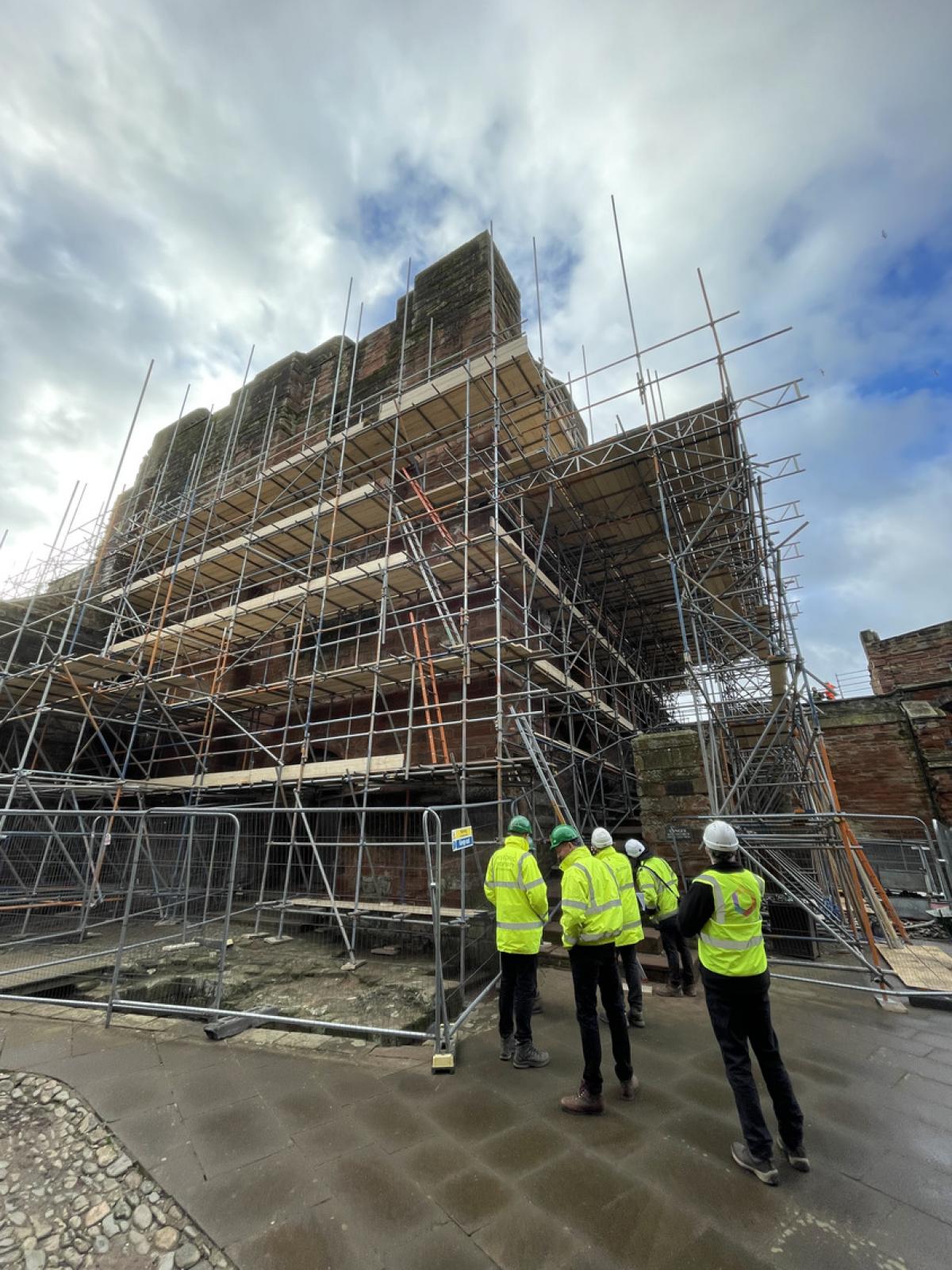
What has underpinned your design approach?
LA: The King’s Gate is an incredibly significant site and is recognised internationally as one of the greatest buildings of the Middle Ages. Our philosophy from the beginning has been to expand knowledge and enhance understanding of the heritage asset. As a result, every decision has been informed by the castle context and the significance of the site.
For example, the King’s Gate would have been the King’s main entrance into the castle; he would have had chambers in the towers, and it would have functioned as a venue for entertaining guests. In response, we have carefully selected high-quality materials and developed bespoke solutions that honour the importance that the King’s Gate would have played in medieval royal life.
Our designs also respect the fact that the King’s Gate was left as incomplete, recognising that this is part of the outstanding universal value of the World Heritage Site. As such, our proposals haven’t sought to complete the building, but simply add another layer to its history. All new interventions have been designed to be visually and physically separate from the castle walls, only lightly touching the building at access points.
This approach has also been applied to the way in which we introduce furniture into the spaces. The majority has been prefabricated off-site, brought in, and slotted into place. Other pieces have been handmade and built to fit around walls or other areas of existing fabric.
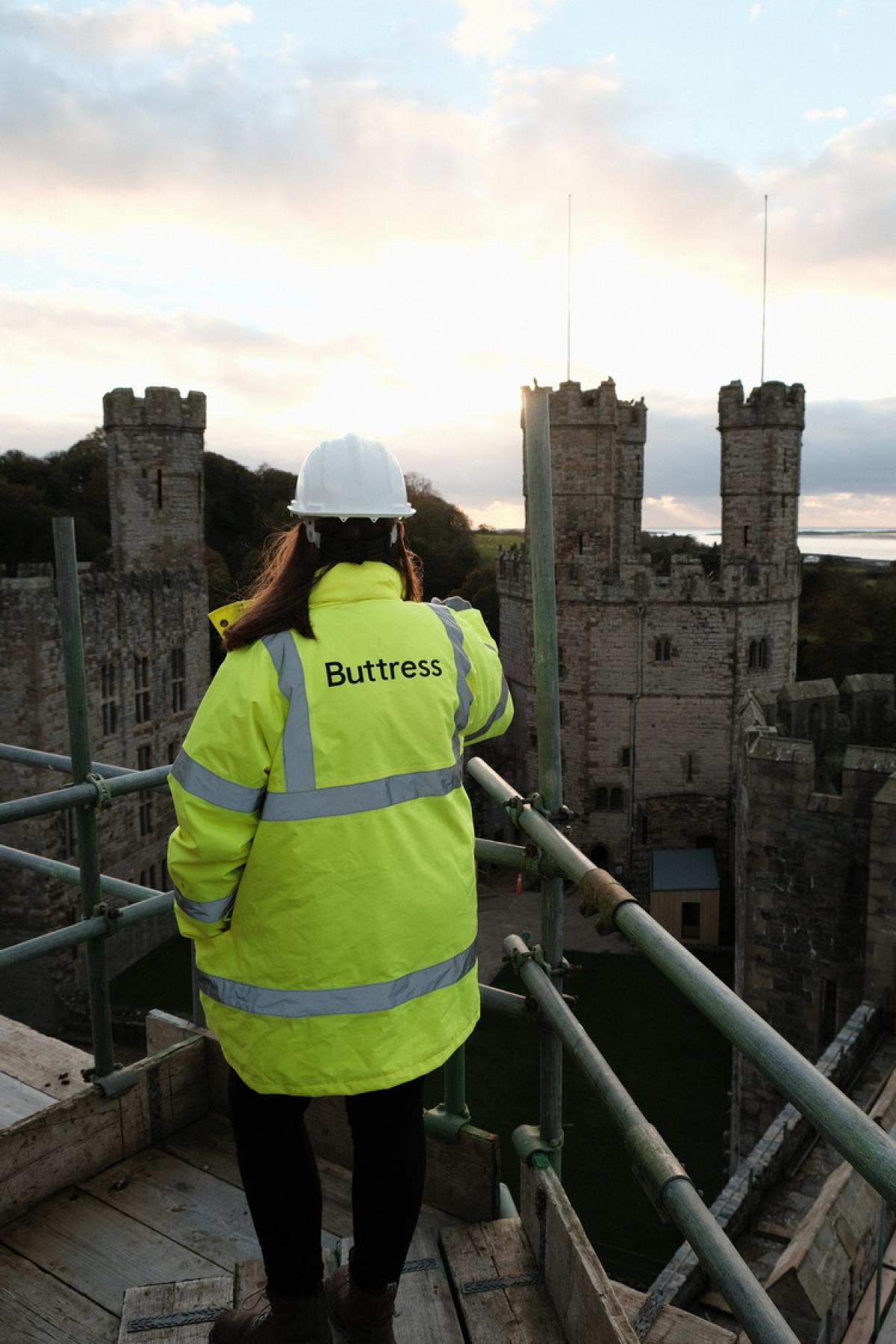
EK: Although we believe that there may have been a canopy at Bolsover during the Victorian era, it had long been removed, so there was no historic precedent on the site that we could respond to. This resulted in extensive discussions about how the canopy should visually manifest itself. Should it be traditional in form, or should it be an honest structure that can be clearly read as a new intervention?
Over a 12-month period, involving extensive consultation with Historic England and the local authority, we have produced a concept that is both simple and complex in design.
A traditional and elegant palette of materials has been selected to minimise the physical and visual impact of the new structure. Careful consideration has also been given to ensure that the canopy does not compete with the adjacent listed asset, but sensitively complements the castle fabric. The result is a high-quality, contemporary – but reversible – addition that serves as an obvious reinterpretation of the historic fabric.
Another important consideration was how the canopy could support itself without any structural intervention on the historic fabric. Working closely with a team of engineers we have created a structure that, visually, appears simple and unintrusive but involves a complex system of cantilevers and light materials to ensure that it remains upright, with minimal connections into the building.
Working with historic sites can often involve a complex stakeholder engagement process. How have you navigated this on your projects and how has it benefitted or informed the approach to each?
EK: Our approach to every project is different, but it always begins with an understanding of the site’s history, context, and significance. From here, we identify and try to engage as many people as possible to get a truly representative picture of people’s aspirations for the site, as well as a deep understanding of what’s important to those who care for it.
It’s also important to us that engagement doesn’t end once work has started on site. We often look at the lifecycle of a project and identify points in the programme that might be of interest to students or local interest groups, or where there’s an opportunity for the public to witness conservation in action. We want to make sure that the story of the project isn’t just told on completion, but that people can gain a new understanding of the site throughout the project lifetime.
LA: Given the World Heritage Site status of Caernarfon Castle, the design development involved close engagement with stakeholders at local, regional, national, and international level. Each stakeholder had a different need and a different level of interest and influence in the project.
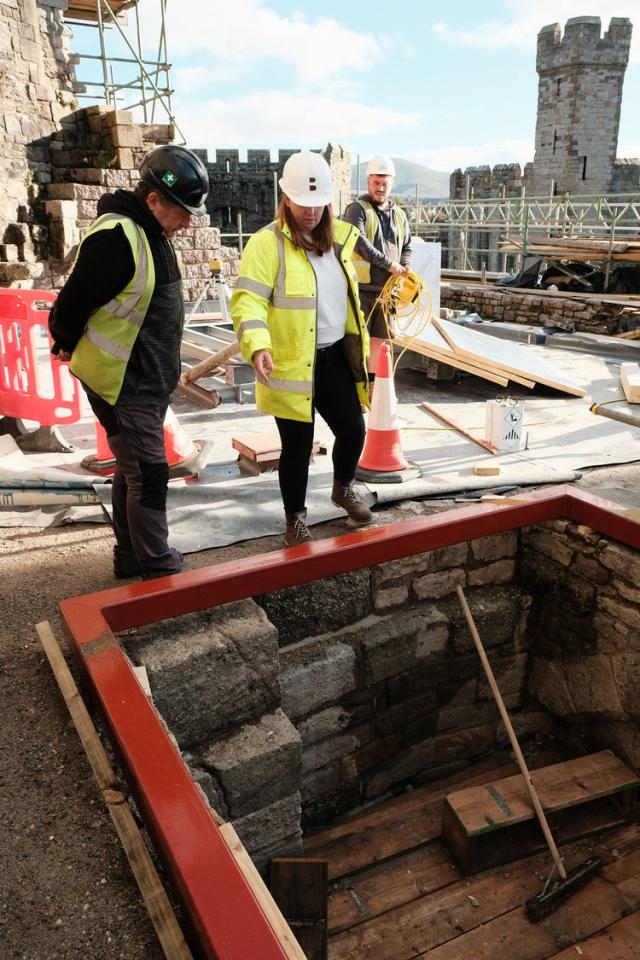
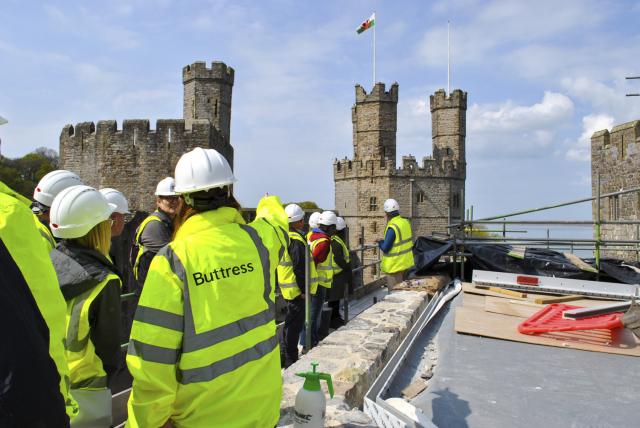
To navigate this, stakeholders were mapped, and an approach developed to engage with each one. These ranged from holding design workshops with key stakeholders to pop-up consultations in the town square, where local people could explore the developments virtually by scanning QR codes.
By carefully and creatively exploring options with the widest range of stakeholders, we have been able to develop a bold and innovative approach; challenging convention whilst revealing and enhancing the King’s Gate’s outstanding universal value.
How, as a team, do you share knowledge to enhance and inform the way in which you care for castles?
EK: As a team, we’re lucky to have conservation architects, conservation accredited technologists and people who have decades of experience working with heritage sites.
Everyone is keen to share their experience and knowledge either through formal CPDs or informal chats with colleagues. We also try and regularly organise site visits to each other’s project so that everyone has an insight into the techniques and methodologies being applied, whether they're working on the scheme or not. This collaborative approach means that there’s always opportunities for everyone – at any stage of their career – to better their understanding, and I think that this plays a large part in the success of our projects
